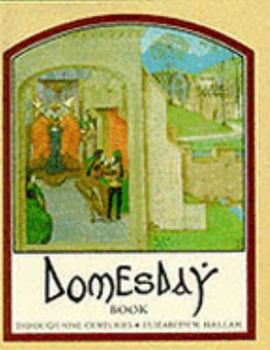Domesday Book Through Nine Centuries
Select Format
Select Condition 
Book Overview
This book challenges the orthodox views of William I's great census of 1086, to give an intriguing story of the origins of England's greatest historical record, as well as new insights into its... This description may be from another edition of this product.
Format:Hardcover
Language:English
ISBN:0500250979
ISBN13:9780500250976
Release Date:January 1986
Publisher:Thames & Hudson
Length:224 Pages
Weight:1.90 lbs.
Customer Reviews
1 rating
The best overview of the physical Domesday Book yet written
Published by Thriftbooks.com User , 19 years ago
For whatever reason, I've been a Domesday Book junkie for several decades; I read everything about it that I can lay hands on, and I have a shelf of Domesday-related publications in my library at home. The content of Domesday, much of which relates to the great tenants of the king in 1086, plays to my interest in peerage genealogy, but I'm also an archivist by training, with a parallel interest in the books themselves -- what they look like, how they were written and bound, and so on. Dr. Hallam, Assistant Keeper at the Public Record Office for nearly thirty years, is probably the leading authority on Domesday in this generation and, as author or editor of a number of works of popular history, she has a demonstrated talent for describing and interpreting what she knows. The present volume was published as part of Domesday Book's 900th birthday celebration and concerns itself not with the details of its contents (available in several excellent and recent editions) but with the history of its use as a resource down through the centuries -- because Domesday still is a living document, not merely an historical artifact in a museum. While its status as a practical source of legal information has dwindled during the 20th century, it still qualifies as legal evidence in an English courtroom, especially in matters of dispute over "ancient rights." The opening chapter, "The Making of Domesday Book," is altogether one of the best brief discussions I've seen of why the survey was undertaken (lots of motives there, probably including William's simple curiosity about the country he had conquered twenty years before), how the project was undertaken (the marvel of it's being completed in only a year or so depended on the previous, simpler tax rolls the Saxon kings had ordered compiled for the proper levying of the Danegeld), and how Great Domesday differs from Little Domesday, and why (the latter being a "final draft" for three shires, abandoned at the king's death in 1087). Throughout the medieval period, Domesday was carted about the country by its peripatetic kings, part of the treasury archive required to settle disputes among titled landholders. Many copies of the text were made of specific sections, for use by monasteries and other tenants, and it also spun off other, entirely new, lists as a result of lawsuits and new taxes. As the royal demesne gradually declined in importance with the decline in royal authority, fewer extracts were made of the data in Domesday, and the book began to take on the flavor of a revered relic, but a series of antiquarians in the 17th and 18th centuries -- part of the new flowering of medieval scholarship that followed the Restoration -- sparked a new interest in Domesday; this attitude is partly reflected in the ornate bindings and keeping-chests constructed for the two volumes during this period. Numerous tracings and transcriptions also were produced, which allowed researchers without ready access to the original to purs





